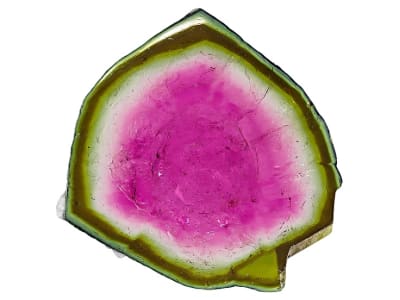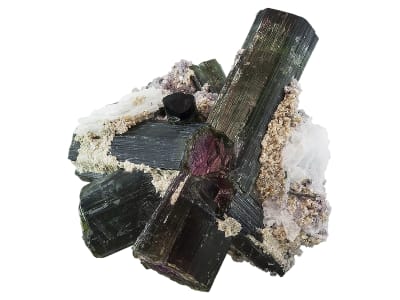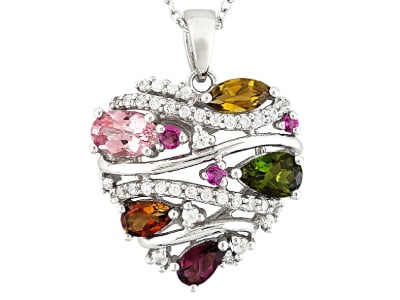The tourmaline family consists of at least 14 distinct minerals, but the elbaite variety accounts for nearly all gem-quality tourmaline. It was named for the colored and colorless tourmalines found on the picturesque island of Elba off the western coast of Italy. Although best known in shades of green and red, elbaite can also be blue, purple, yellow, or colorless. Notable varieties of elbaite include rubellite, green tourmaline, indicolite, watermelon tourmaline, and Paraiba tourmaline.
General Information
Common Name
Elbaite
Species
Tourmaline
Transparency
Transparent - Translucent
Dispersion
Strength: Moderate Fire Value: 0.017
Refractive Index
1.614-1.666
Birefringence
0.018-0.020
Optic Character
Uniaxial
Optic Sign
Negative
Polariscope Reaction
Doubly Refractive (DR)
Fluorescence
SWUV: Inert
LWUV: Inert
LWUV: Inert
Pleochroism
Dichroic, moderate to strong, varying shades of body color
Hardness
7-7.5
Streak
White
Specific Gravity
2.900-3.100
Toughness
Good
Inclusions
Green elbaite tourmaline stones are type I clarity stones. Blue, purple, orange, yellow and bi-color or parti-colored elbaite tourmalines are type II clarity stones. Stones might contain liquid and gas inclusions that are long and thin, reflective gas-filled fractures and color zoning.
Luster
Vitreous
Stability
Very Good
Fracture
Conchoidal, Subconchoidal, Uneven
Cleavage
Poor, in two directions
Chemical Name
Complex boro-silicate of Al, Li and Na
Chemical Formula
Na(Li1.5Al1.5)Al6(Si6O18)(BO3)3(OH)3(OH)
Crystal System
Trigonal
Chemistry Classification
Silicate
Elbaite Colors
-
 Bi-color
Bi-color -
 Blue
Blue -
 Blue
Blue -
 Brown
Brown -
 Colorless
Colorless -
 Green
Green -
 Multi-color
Multi-color -
 Orange
Orange -
 Pink
Pink -
 Purple
Purple -
 Red
Red -
 White
White -
 Yellow
Yellow
Countries of Origin
Afghanistan; Russian Federation; Mozambique; Pakistan; Unknown; United States of America; Brazil
Care
Normal Care


